How we’re preparing for the Open Championship
Related Articles
With just a few days to go until the belated 149th Open Championship at Royal St George’s in Kent takes place, we speak to their course manager Paul Larsen about how they’re preparing for the tournament.
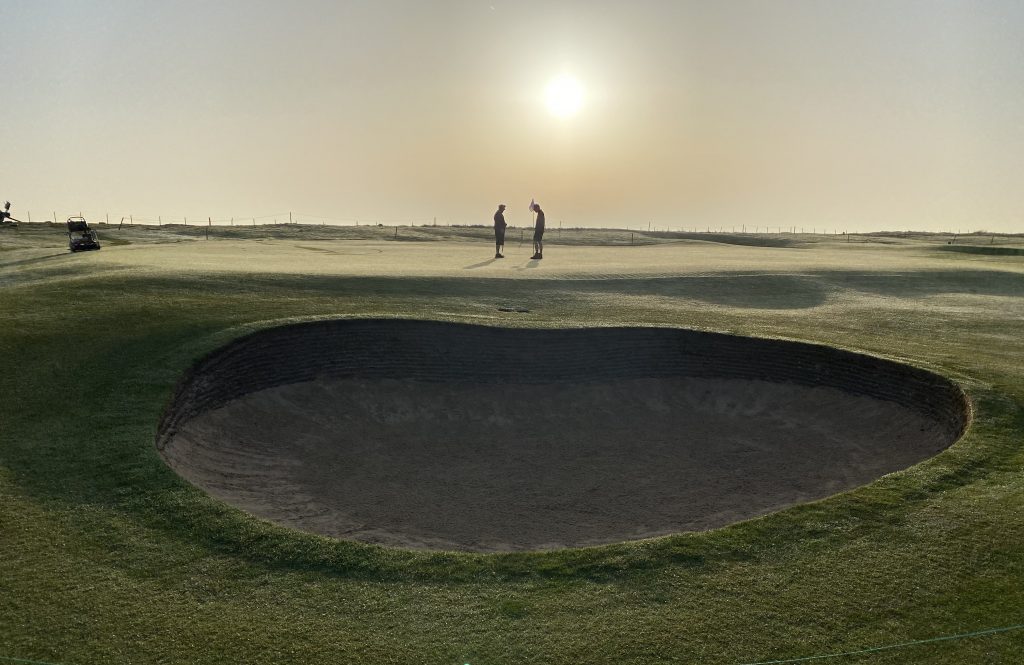
This month the Open Championship will, finally, take place at Royal St George’s, one of the world’s greatest golf courses.
We speak to its course manager, Paul Larsen, about how his team has prepared for one of the biggest golf tournaments in the world – particularly against the backdrop of a pandemic that saw the event postponed by a year, and increasing weather challenges.
Can you tell us about your career journey to becoming head greenkeeper at Royal St George’s Golf Club?
Quite a long journey I would say and could probably write a book on this question! When I left college doing my A levels I went to work for Redbridge Council as a groundsman. I was looking after football pitches, hockey pitches, sports tracks and so on. While there I studied City & Guilds horticulture at Capel Manor, I then left to become a postie in W1 London. I then did a fair bit of backpacking around Europe and eventually the world, working my way round. I did various jobs from building a roller coaster, admin, landscaping, growing grapes plus speed planting trees! Now that was hard work! From there I did a few admin jobs working for solicitors in London. I then quit to move back to Folkestone where I got a job as a greenkeeper in 2000. I then moved to Royal St George’s in 2005 as an assistant but left to go work in Holland for four years. I was head greenkeeper at Westerpark Golf Course but left in 2011 to come back to Royal St George’s in 2011 for the last Open. In 2012 I became course manager.
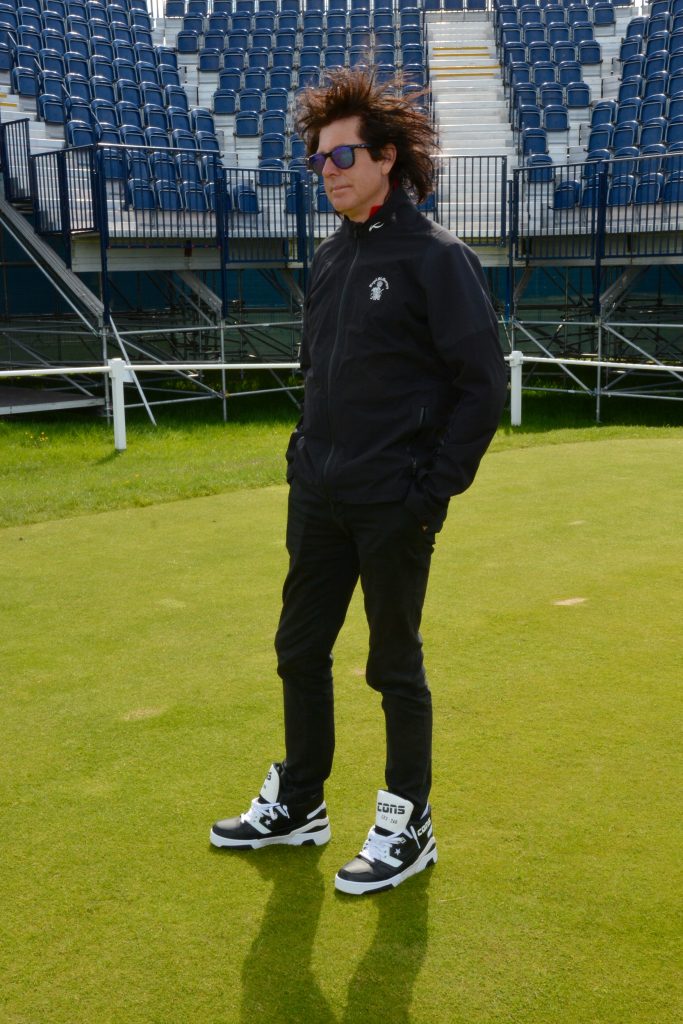
What is the size of your current team and how do you maximise their resources in the lead up to the Open? How many volunteers will be joining the team and where will they be accommodated?
I have 15 greenkeepers including two mechanics who help out on the course. We have one gardener as well. We do a lot of hand cutting which takes a lot of time. We try to hand cut greens daily plus we hand cut tees. We have one of the biggest sites on the Open so 15 may sound a lot, but it really can be a push to get everything done that is required. Bunkers are raked daily by hand and with over 100 that is time consuming. During the drought of 2018 we lost a lot of grass so have been busy hand dressing any worn areas by hand as we wanted to be gentle on any drought areas. This has been time consuming but been very rewarding. All the staff have separate areas of the course that they specialise in. I encourage the team to come up with any ideas for making improvements for the course. By doing this I feel the team have ownership of the course thereby making it a team effort. I want them to be proud of the course as it’s all down to them how good the course is.
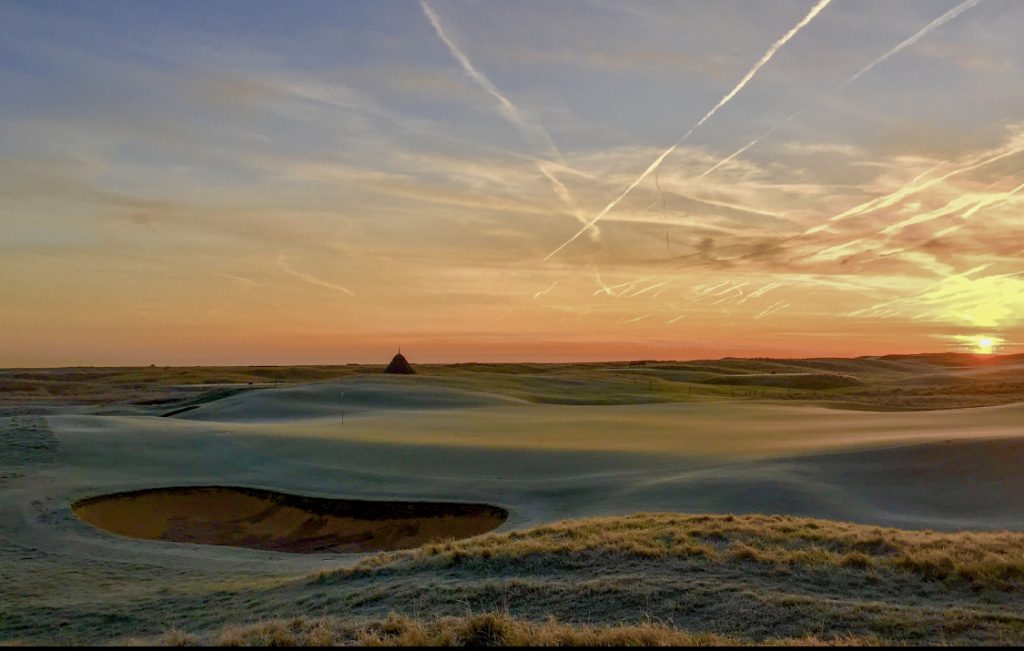
When did you start the preparation for the Open and are you now where you planned to be?
We started prepping back in 2013/14 when we went on a conversion of grasses from rye Yorkshire fog, poa to fescue. We also had a bunker review which saw us create some new natural ones, take a few away, change the shape of them and so on. The fourth ‘Himalayas” bunker was a good example of changing the style of bunkers away from the greens. We have gone through many hurdles but now we are coming through and just need the weather to play ball so we can enjoy a good Open.
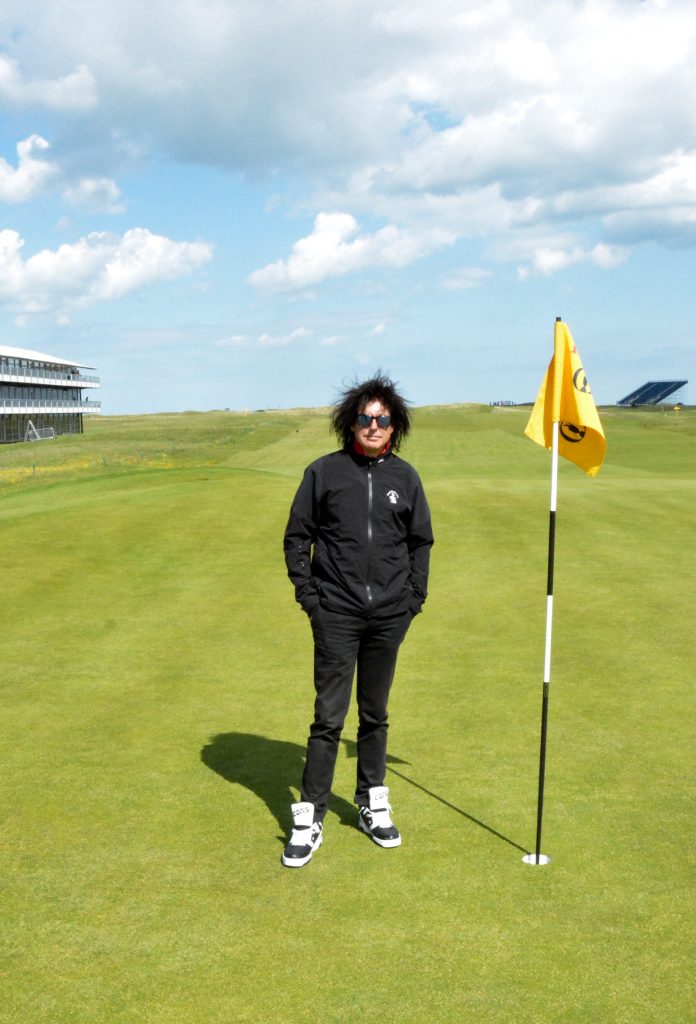
What would you say are the biggest challenges you currently face in the lead up to the Open? Are you still dealing with the effects of the 2018 drought?
The biggest challenge to me now is getting up some of the semi rough. We have done lots of hand dressing with pure fescue and currently have been seeing some growth due to some rain and warmer weather. In regards to the drought of 2018, it was heartbreaking. I felt the course was in the best shape it had ever been in all through the year but come late summer and the heat got worse. We then had the issues of not having enough water at the time (we have built our own reservoir since). We lost so much fescue from our fairways and semi rough that it was hard to take. We had a terrible autumn with September temperatures of over 35 degrees Celsius, which lasted for ages. By the time we got any significant rainfall it was late November, by which time we lost the heat. So we got no recovery from that autumn or winter. So, since 2019 we have been overseeding with fescue and top dressing everything by hand. This was a time consuming job but I felt it was the best policy to get the fescue back gently. In fact we have just been doing this continually and will continue to do so until early June. Hopefully then we will have complete coverage. To be fair the fairways have recovered amazingly well now. The semi rough is almost there but greens, tees, bunker tops really look great now. It is a testimony to the team’s real hard work and commitment that we have come back from the drought even stronger!
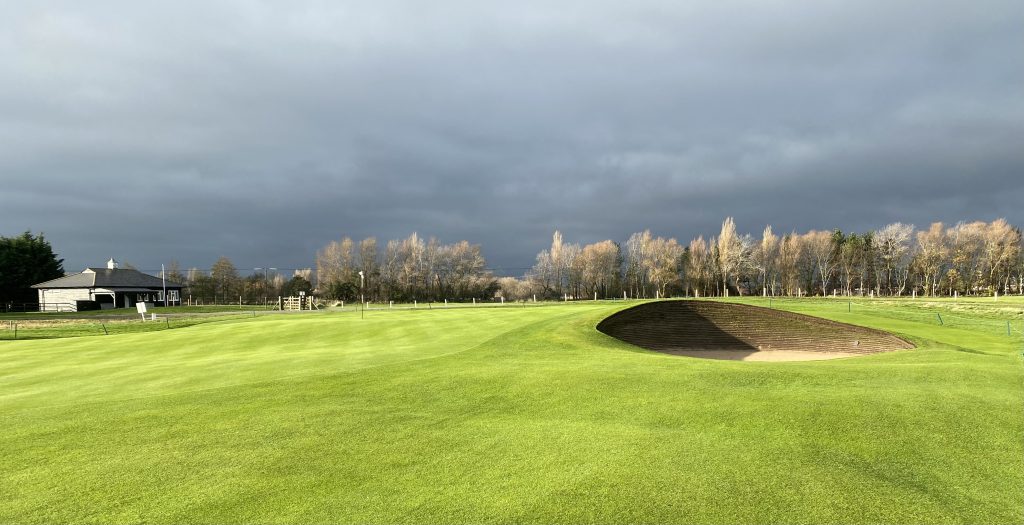
You’ve worked to change the composition of the grasses to the tees, greens, aprons and even the rough. What drove this programme, what cultivars did you use and what results have you seen?
In 2011 I changed holes with Grant Moir and Malloy Parks. Grant would always say can I put the hole here and Malloy and myself would say can we move it back a yard so we can get it in this nice bit of fescue. We would always find the right spot but afterwards I said to myself I don’t want to have to move the hole in the future and it should go where it is best for the strategic plan for the course rather than finding a nice area on the green. So in 2013/14 we embarked on changing the composition of all the grasses on the course. From greens, fairways and tees to the rough. This culminated in 2017 when we had the British Amateur. The course looked great and with an incredible amount of fescue in it. We were lucky that Peter Cowell drove this plan and wanted us to have the best surfaces possible. Now that is not to say the course was not good before we embarked on this plan because everyone was in agreement that the greens were very good in 2011. We just wanted to go down a more sustainable route with regards to making it a more fescue dominated golf course. I was aided in this by Barenberg and used their cultivars of Bar Fescue and Bar Fairway. We also used a lot of hard fescue on the slopes of the fairways. They can be hard to manage because they get so dry and are south facing which means they dry out in no time. This has really helped plus with the use of a wetting agent bio stimulant on fairways (Vitanova). The most pleasing thing is that the fairways have come back so well and I think they will look great for the Open.
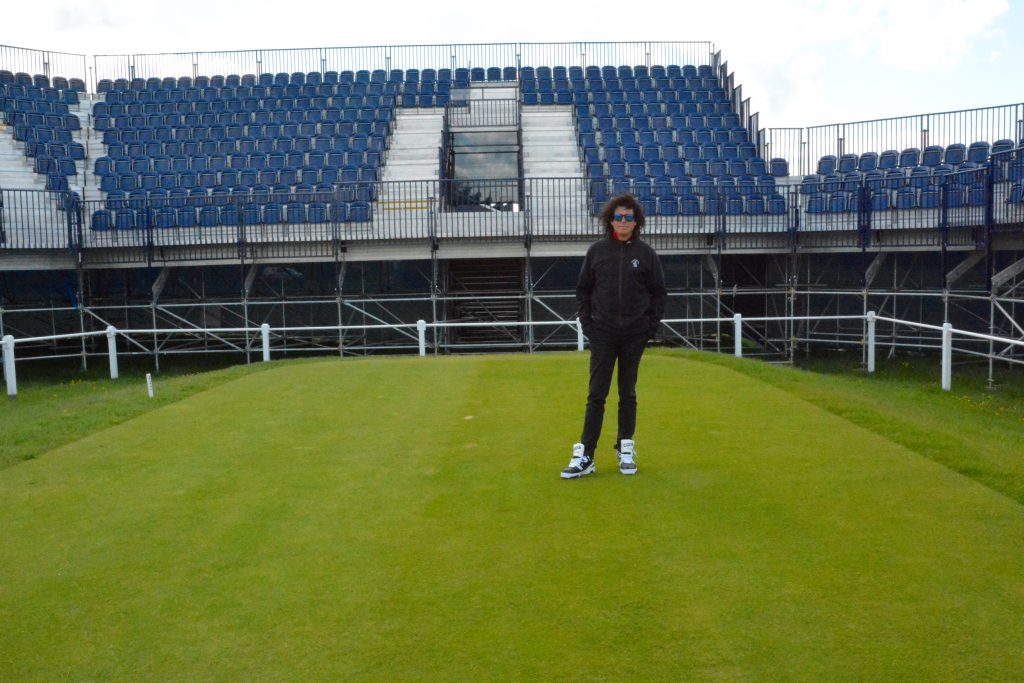
The course underwent a burning management programme under the guidance of Dr Graham Earl. Can you explain exactly what this entails and what results can now be seen?
We went on a very big burning management plan. On my travels in Australia I had worked on some farms where they did this. The Aboriginals were fantastic at controlling this and whenever I went back to sites after the burning I was amazed at how vibrant they were. So when I was back at St George’s we did a bit of burning in small areas as a trial. The success of it was astounding. It was also very quick so can save months of cutting and collecting, so was a no brainer. I was in contact with Dr Graham Earl at the time who was doing trials on the course whilst doing his coastal wetlands project as part of his PhD. We had a chat about things and we did a load of trials on different forms of cutting regimes. Burning by far came out on top. It is incredible to see as you see everything burn out apart from little strands of marram. It is completely black and desolate for about six weeks but then you see it come back to life. You lose that lush thickness but regain the marram plus we have never seen so many wild flowers on the course with a massive increase in lizard orchids. The land is now in keeping with the dunelands.
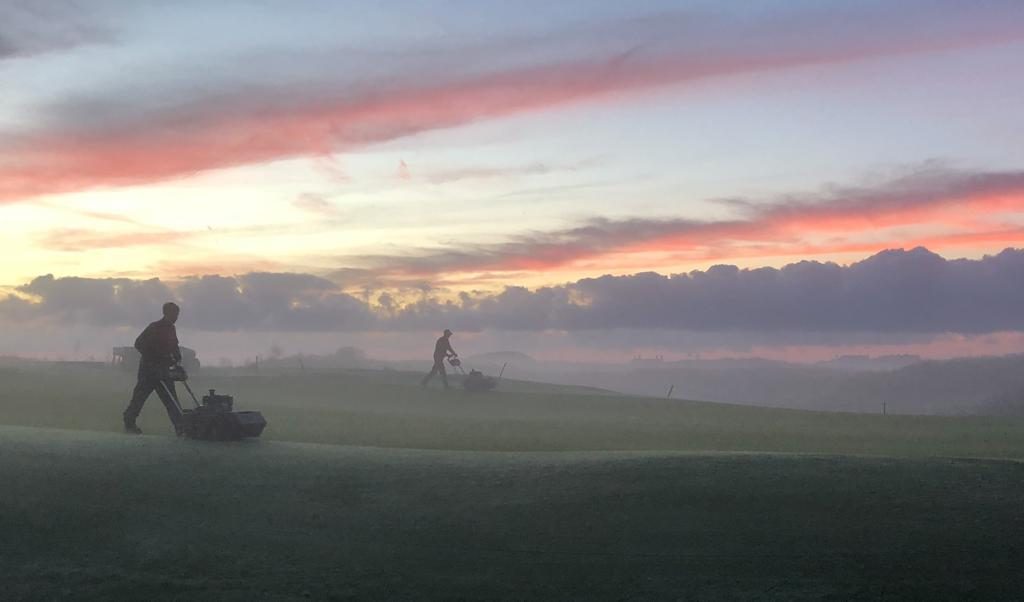
In 2017 you and the team embarked on a bunker building programme as part of the lead up to the Open. What has happened since?
Leading up to the Amateur we built 43 bunkers with the plan to build all 104 bunkers the year before the Open in 2020. This was all going to plan but obviously the pandemic changed all that! Mind you I think the bunkers look very rustic now so hopefully will look good for the Open! We have also created a few natural bunkers on the 4th, 6th and 7th. We have also taken a few away and these have been replaced with swales. I think the bunkers are now more in keeping with the course and frame the course within the dunes.
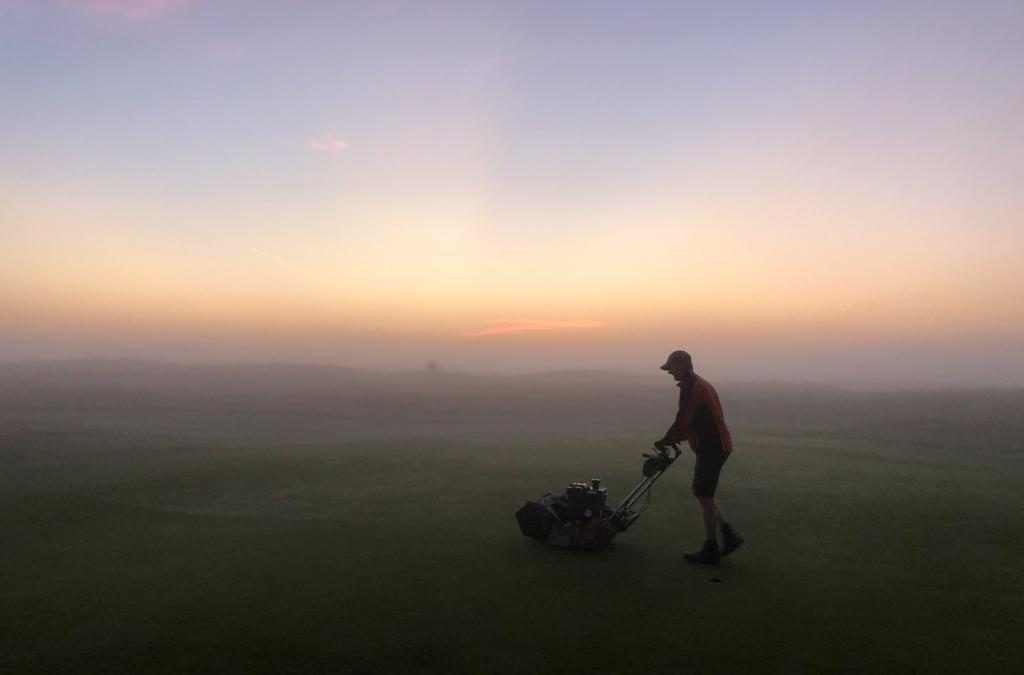
You are working in a close relationship with The R&A. Can you tell us more about that?
I’ve been working with The R&A very closely the last few years. We are always in constant contact. We do meet up for seminars between Opens so we are always in discussion. It is also nice to catch up with all the other courses on the rota to discuss ideas and share information. In the past few years I have worked more closely with Alistair Beggs and Adam Newton who I have worked with for many years. We gel well and have become a good team. Of course we have had the odd difference of opinion from time to time over the last 10 years but we always find a solution and so far it has always worked out well. In fact I think it’s great that The R&A have really endorsed the sustainability agenda as it sends out a great signal to the rest of the world. Also in conjunction with The R&A we have embarked on our GEO certificate, which we have now gained twice.
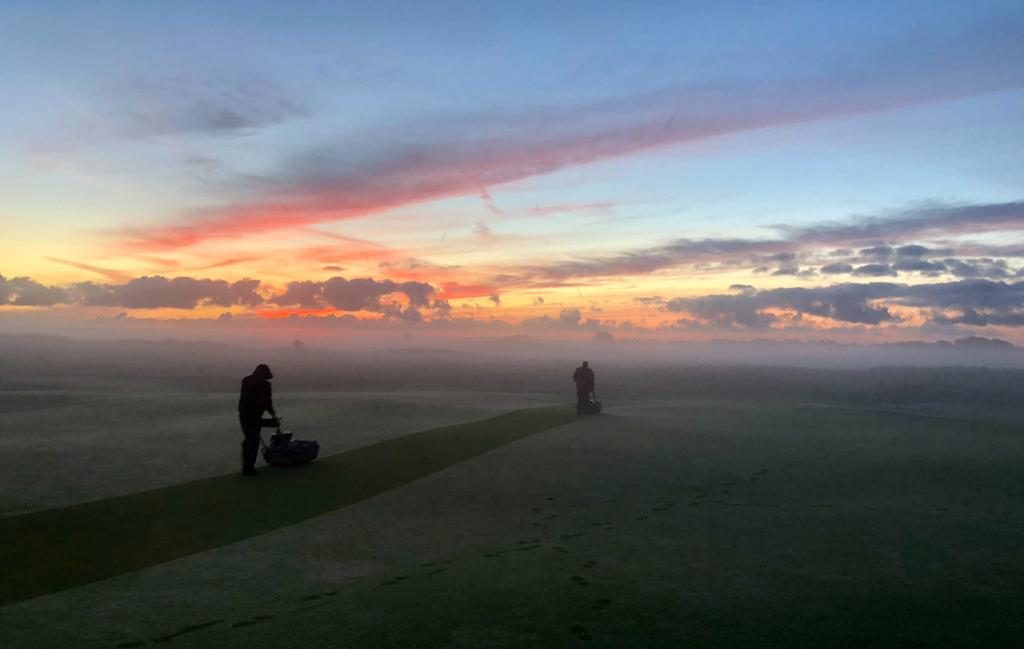
Phil Williams and Natural England have helped to ensure the course is managed to maintain and improve the conservation value, together with the Environment Agency. What did these relationships bring to you and the course?
Phil has been great for me personally. I have learned a lot from him over the years. With his help, plus Dr Graham Earl, I have embarked on a real sustainable programme for the course and the dunes itself. When I took over we were in an unfavourable status on our SSSI land. We then became recovering unfavourable in 2015 and last year we achieved our goal of becoming favourable.
This is the highest you can be and is something I and the club are very proud of. It really highlights our sustainability to the dunes plus it proves that golf courses can be an asset to the natural land. We work in partnership with all our environmental friends to maintain the best practise for the dunes.
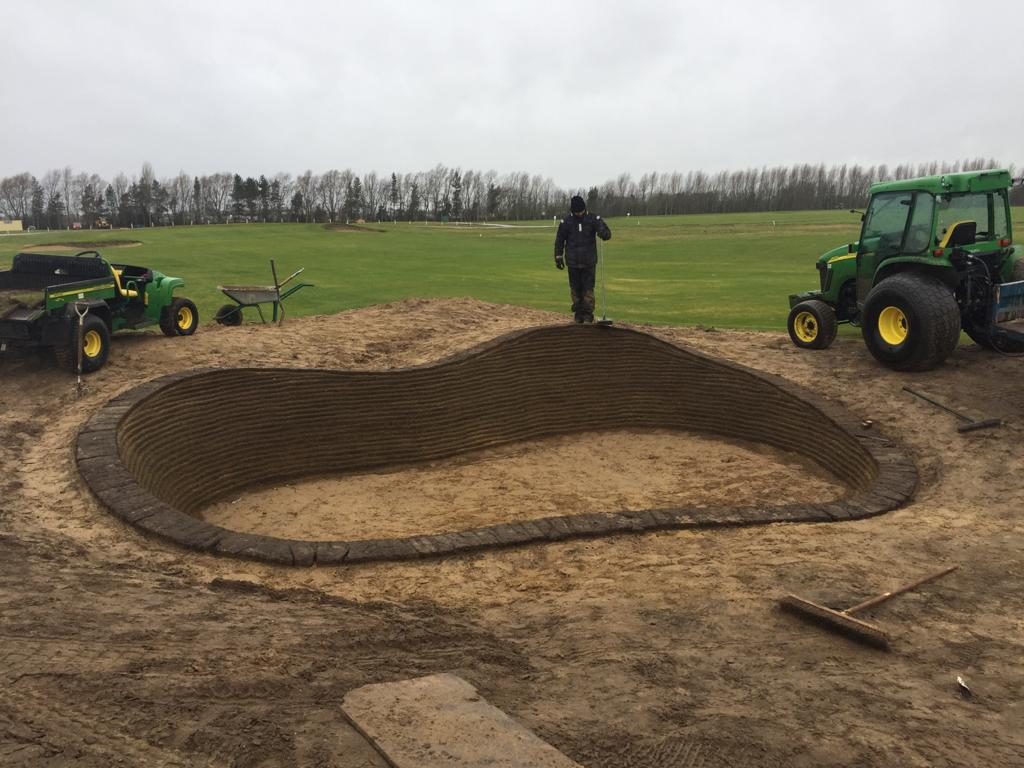
You have a relationship with Aquatrols and use some of their products. What is it about its distribution channel that you value?
I have worked with Aquatrols for many years now. I mainly use Revolution on greens, tees and aprons. In this driest of areas this wetting agent has been an integral part of my maintenance plan. It is crucial here to maintain an even target of moisture. Our goal is to keep the greens around 16-20 percent moisture and Revolution has allowed me to achieve this.
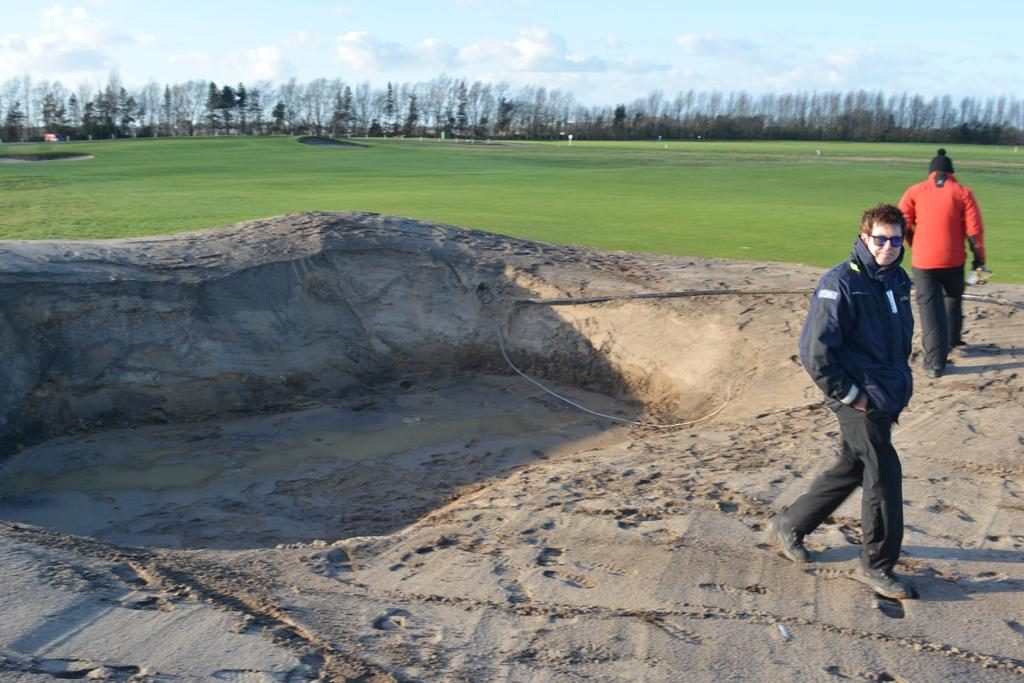
How would you describe the customer support Aquatrols has given to you and the course in the lead up to the Open?
I am in regular contact with their reps Alan [Alan Pierce, Aquatrols account manager] and Cookie [Bob Cook of T.Parker & Sons, an Aquatrols distributor]. We constantly wander the course and they are there if I ever need any advice.
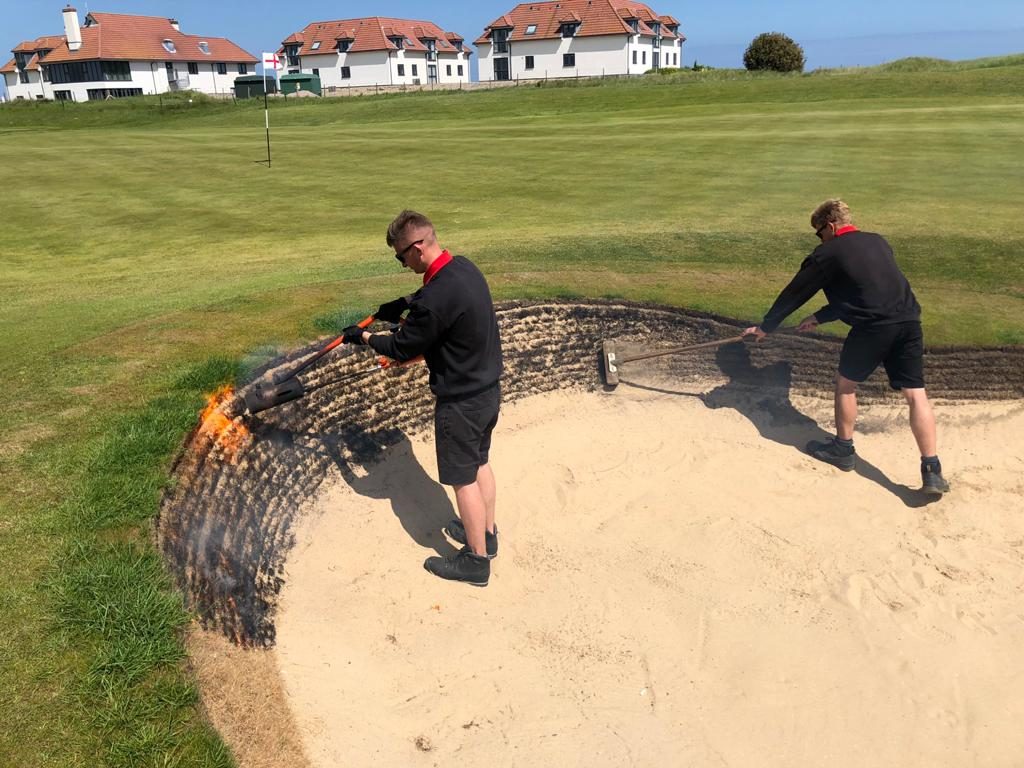
The demand is growing year-on-year for a more ‘intelligent use of water’. Where do you draw water from, what are you doing to reduce use and what are your views on water management?
After the drought we really had to have a re-think about our water supply and moisture management. We started using wetting agents monthly which has really helped plus the use of different fescue cultivars. We also built our own reservoir with a water holding capacity of 32,000 cubic metres. We had a 21,000 cubic metre abstraction licence but gave this up for a 13,000 one as this will help the Environment Agency. Thus we now have over 42,000 cubic metres. In relation to water moisture management we will check moisture levels every day. We have a POGO and this has become a big weapon in our arsenal. We will always take into account ET rates lost during the day. Any mistakes can lead to a drying out effect which in turn will lead to fairy rings appearing. I am lucky my irrigation technician does an amazing job keeping on top of this. One thing we will never do is waste water and it really is a commodity. You will probably see me moaning a lot on Twitter about lack of rainfall!
The spotlight will be on Royal St George’s for the Open. How do you prepare yourself personally for this event and what do you want to achieve from the Open and the experience?
As long as we have prepared everything in advance I think I will be quite relaxed. I have a great team behind me and they all know what they have to do. They know the expectation levels so we hope to be showcasing their skills. As for me, I hope I can enjoy the experience of seeing the world’s best golfers up front and the excitement of a British winner or Spieth win! Deep down my goal is to hope the players and fans just enjoy the course for the beauty that it is. I love the course and hope that the sun comes out so they can see it at it’s best like I do. I know I have been praying for rain these last few years but really hope we can enjoy four days of bliss weather!
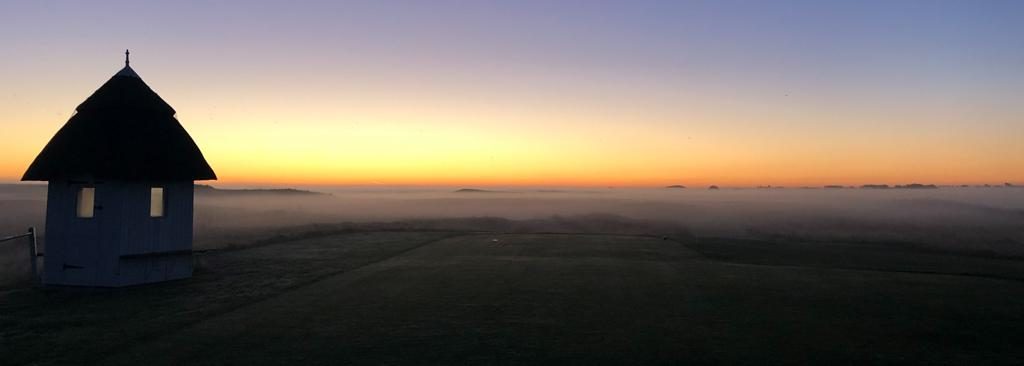
Training and education are key to developing a good team, what do you do to ensure you are investing in raising the standard of practice and performance from greenkeeping team members and how would you describe your style of management?
All my staff are encouraged to do training courses. We have put four apprentices through since I have been here with them getting distinction. We have had quite a few do their NVQ Level 3 as well. We have always sent our staff to Harrogate over the years. One of the biggest ways to learn in my mind is to visit other courses as you can learn way more this way. In regards to my style I like them to take responsibility for the course. I am very lucky that the team are very dynamic and always coming up with new ideas. We have really pushed the course on by doing this. In doing this the team feel that the course is theirs and have ownership. We like to trial new ideas and sometimes they don’t always work but always need a bit of failure to learn from. We need to learn from our mistakes but not be scared to do so.
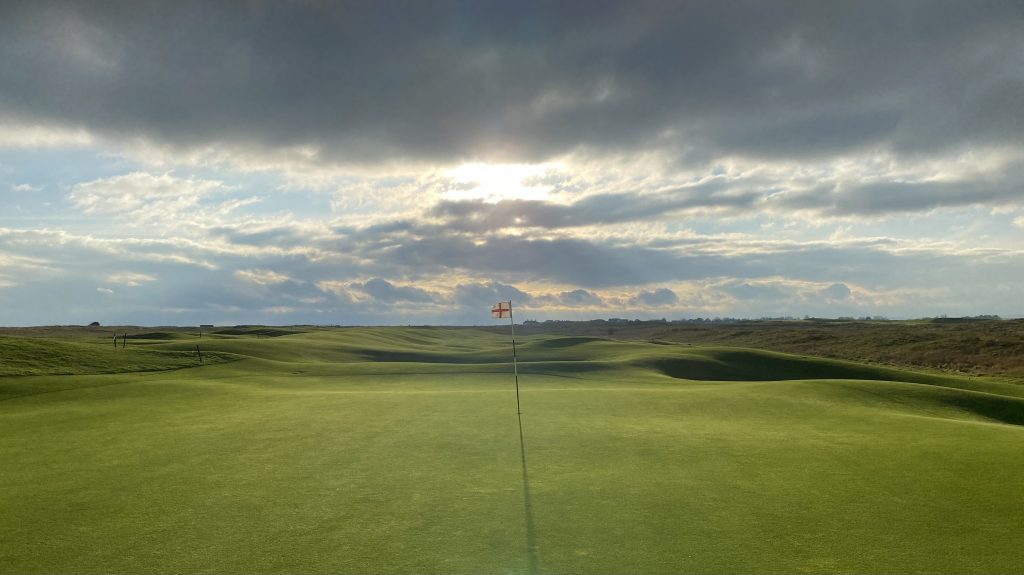
You have a clear determination to limit chemical use and reduce fertiliser use. What is your philosophy and what are you looking to achieve long-term by applying reductions?
I am a great believer in limited use of fertiliser and probably my Jim Arthur beliefs hold me to that. I have this view that you are what you eat. There is a place for everything in moderation! Too much antibiotics and you find you become immune to them. Same with chemicals, so use with caution. I think the less harmful products I put into my soil, the more healthy it will be. Thus the more healthy my turf will be. Saying that we seem to be in a difficult situation in the control of leather jackets and chafer grubs. Chemicals now banned in that department have made life very difficult for the turf industry and it is soul destroying to see courses lose their turf in front of their eyes. Now the industry have tried many alternative methods to solve this but not sure anyone has come up with anything that 100 percent works. We have a tough choice in either getting back the chemicals that have worked in the past or accepting that we will be struggling to keep control of our turf. I think this has to be debated in the industry and we can only hope someone comes up with something that is safe that works.
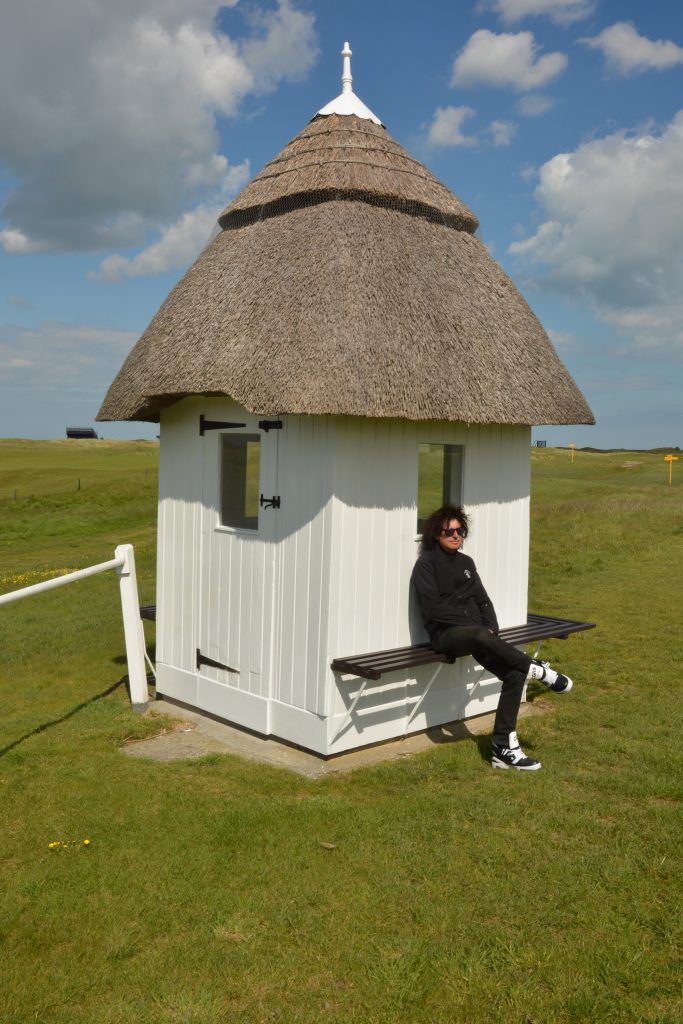
The pressures on the course manager to deliver a better product are growing year on year and the level of professionalism is rising with this. What do you think are the qualities now needed to meet the requirements and demands of golfers by someone in your position and how does this help contribute to the business of golf?
It does seem that the pressure has been cranked up in the last few years. Golfers’ expectations are much higher now but mainly due to us greenkeepers delivering a much better product over the years. To me it is now a job you have to love as it can consume you all the time especially if you’re in charge. It does seem to be a battle with the weather and the environment. Throw in those early mornings in all weather weekend work Bank Holidays and you can see why youngsters are failing to come into the industry. Generally I now think people who get into greenkeeping really love golf and through that they will put their heart and soul into the job. To have this commitment from greenkeepers can only be good for golfers as they know the greenkeeper is looking after their turf as if it’s their own. With the pandemic I really think people appreciate being outdoors and golf courses now seem to be a thriving place. Long may it continue.
What gives you the greatest satisfaction from your job?
At the moment, seeing how the fairways, tees and greens are performing after the drought gives me a lot of satisfaction. It was quite tough back in 2018 so when I walk around the course or climb up to the ‘maiden‘ on the 6th to view the course it really is pleasing. I am really proud of what the team have achieved and to be honest they are just a great bunch to work with. Their sense of humour keeps me laughing most of the day. Work has to be fun as well and I still love the banter we have even if it is in our smaller bubbles. I guess that has been one of the worst things as for me – it’s much better when we were all in the mess room. Our biggest achievements so far must be the change of grasses on the course, especially the greens. Our bunker building is also second to none as the team have brought that to another level. Getting our SSSI status is also up there. I hope we can carry on to improve things on the course as there are still lots more to achieve and we are our own biggest critics I guess.
On a personal level though one of my biggest achievements was the setting up of The Links Club with Rhys Butler, Richard Whyman, Ian Kinley and Craig Boath. We did this to encourage the exchange of ideas and knowledge of links courses. We like to have a day’s golf at one of our meetings, then a night to talk over dinner followed by some education on a course walk the next day. As well as education it is also a case of support for each other on all our links courses. The Irish Links Initiative got me thinking about it as I loved it when I saw the work that was going on over there. It really inspired us. So I have to say thanks to those guys as the TLC has gone from strength to strength. If Covid abates we really hope to have it at Carnoustie this autumn.
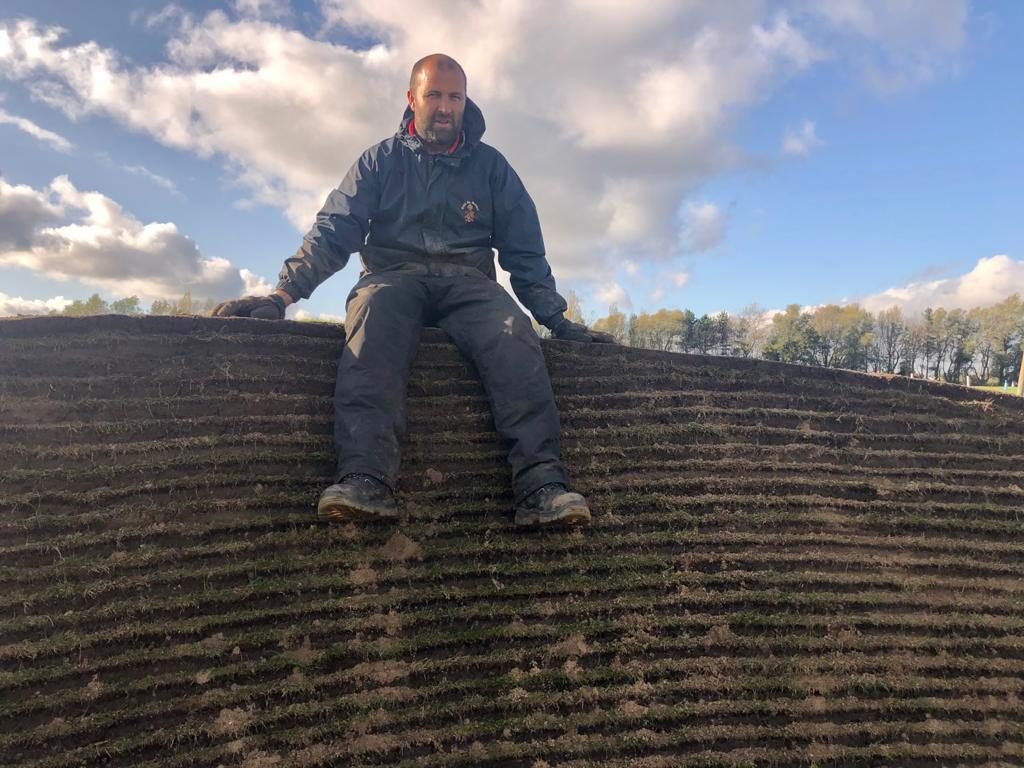
You said your chairman of greens is highly proactive and plays a significant role. How do you work together in partnership?
I am very lucky that my chairman of greens, Dr Chris Healy, has been so supportive – of both me and the team. He is a very calm, calculated man and has helped us get through some really difficult times. We seem to have battled the elements but to have come through it has been very rewarding. I feel the doc has become a valued member of the team and we are constantly texting and sharing ideas! I think his golf may have suffered though! After the Open Chris will have finished his tenure but I hope he can look back on his time with pride. His passion for the job was incredible and I will sorely miss him!
What advice would you give to youngsters starting out and wanting to pursue a career in the profession?
If you really want something you can achieve it through hard work and passion. I believe passion is more important than skills to begin with because if you don’t have passion for this job you will not enjoy it. If you do have the passion you will gain the knowledge and be able to achieve all you set out for. Don’t be shy to ask questions and gain as much experience as you can. Working in Holland was a big plus for me so it’s also a good excuse to be able to travel around. Variety is the spice of life.
What changes do you think need to be made to benefit the industry sector and profession of the greenkeeper?
That’s a tough question to answer in a short time but I feel we need to increase pay before we keep saying it’s all about education. We’re losing a lot of people from the industry now who can earn more from landscaping. This is a shame as we are going to need some good people in the coming years as it really is a battle with climate change. With no real control as yet for leather jackets, chafer grubs and higher expectations, we know we are going to have to battle hard to get to where we want to.

























